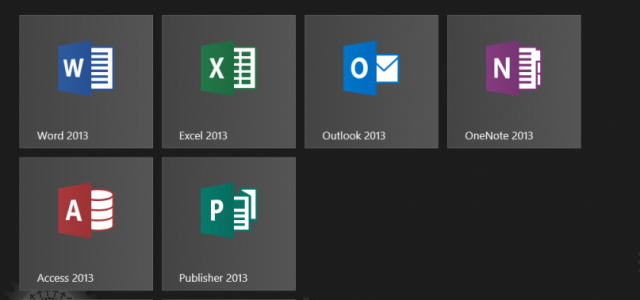Microsoft Office 365 Home Premium Edition hopes to be at your service.
Microsoft releases Office 2013—the first full release of Microsoft's latest-generation productivity suite for consumers. Office 2013 has already made a partial debut on Microsoft's Windows RT tablets, though RT users will get a (slight) refresh with the full availability of the suite. The company gave consumers an open preview of Office last summer, which we reviewed in depth at the time of the suite's announcement.
So there aren't any real surprises in the final versions of the applications being releasing today, at least as far as how they look and work. Today's release, however, marks the first general availability of Microsoft's new subscription model under the Office 365 brand the company has used for its hosted mail and collaboration services for businesses. While the applications in Office are being offered in a number of ways, Microsoft is trying hard to steer consumer customers to Office 365 Home Premium Edition, a service-based version of the suite that will sell for $100 a year.
And just as Windows 8's app store started to fill up as the operating system approached release, the same is true of Office's own app store—an in-app accessible collection of Web-powered functionality add-ons for many of the core Office applications based on the same core technologies (JavaScript and HTML5) that power many of Windows 8's interface-formerly-known-as-Metro apps. Now, the trick is getting consumers to buy into the idea of Office as a subscription service and embracing Microsoft's Office "lifestyle," instead of something they buy once and hold onto until their computers end up in the e-waste pile.
The pompatus of Office
Microsoft has done a lot to sweeten the pot to attract consumers into the subscription model, enlisting nearly everything but the Publisher's Clearinghouse Sweepstakes. While the lowest-cost perpetual-license version of Office 2013—Office 2013 Home and Student—is priced at just under $140 and includes the four core applications (Word, PowerPoint, Excel, and OneNote), Office 365 Home Premium Edition comes with all of those applications plus the Outlook mail and calendar client, Access database, and Publisher desktop publishing tool.Home Premium also comes with licenses for five installs of the suite—including Office 2011 for Mac installs for those households with mixed operating system allegiances. Home and Student has been trimmed down to allowing just one installation per license. And as part of its subscription, customers will also get 60 minutes a month of Skype calls to phone numbers within the US (as Microsoft continues to position Skype as the consumer version of its Lync enterprise voice, video, and messaging service). And it comes with an additional 20 gigabytes of SkyDrive cloud storage.
We've reviewed most of these applications in depth, but it's worth reviewing the major changes to them one more time in case you missed Microsoft's Office 2013 marketing machine. The biggest change across the board is that the interfaces for all of the Office apps have been thematically updated in an attempt to make them less cluttered and more amenable to tablet users. There's also a new add-on "app" interface for Office that plugs into most (but not all) of the applications in Home Premium.
The most heavily updated of the applications in terms of functionality is Word 2013. Its collaboration capabilities have been updated. While Office 2010 provided some SkyDrive-based document sharing, Word 2013 adds a co-editing capability that allows multiple people to work on a SkyDrive (or SharePoint) shared doc. It's not Google Docs in terms of live joint editing, but it's a step forward. Another gift to collaborators is a new simplified markup process for tracking changes and comments that allow collaborators to leave threaded discussions on the content.














